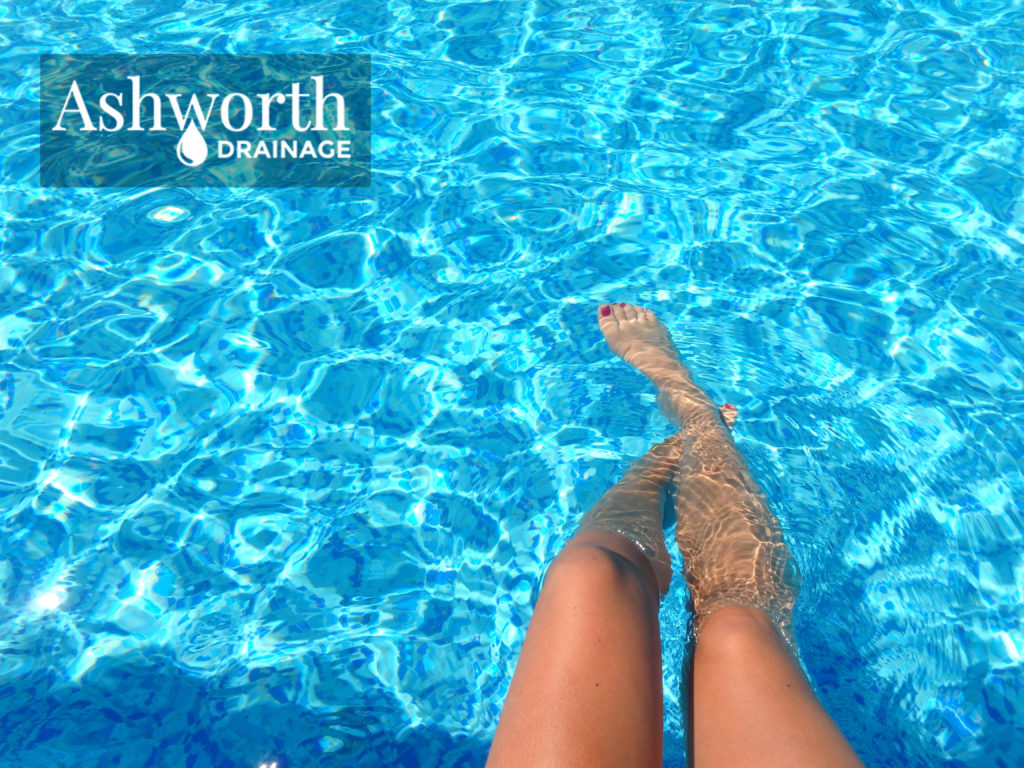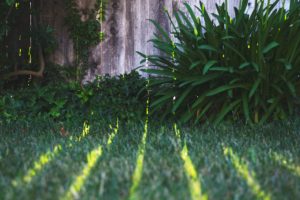How Pools Can Complicate Yard Drainage

A backyard can be hard to drain as completely as many property owners would like. Whether it’s flat or sloped, a lot of us have to fight against unwanted pools of water turning their lawns into miniature swamps. Things get even messier when these property owners put in a wanted pool of water.
Inground and above-ground pools can seriously complicate how well your yard drains and can make drainage issues actively worse. It’s important to have a drainage system put in place that will remedy the problems that are bound to happen!
The Drainage Problems Caused By Pools In Your Yard
A pool of any type is an intrusive landscaping element to add to your yard, but the problems they cause depend on whether it’s an inground or an above-ground model. An inground pool can completely change the way water drains in your yard because the cement and the massive amount of water will interfere with the natural flow of subsoil moisture. An above-ground pool is less intrusive, but the amount of water that spills out of it will still cause plenty of drainage issues.

The introduction of a large amount of water, combined with an interruption to the natural drainage of the yard, can redirect the water to places where it doesn’t belong. This can be to a depression in the yard, the yard of a neighbour, or even your foundation walls. The company installing the pool should spend a lot of time assessing the grading of the yard, making sure everything is level, and that the pool is constructed in the best possible spot for drainage.
Another issue is draining the pool itself at the end of the summer. No matter how it’s emptied, moisture is guaranteed to get on your lawn and soil during the removal of this large amount of water. Unless you have a solid drainage system in place, that pool water can become unwanted standing water, and this can be bad for your foundation, too.
How To Remedy Drainage Problems Caused By Pools
For the sake of the cleanliness of the water, the deck should slope away from pool, roughly a quarter of an inch per foot. This might seem counter to what we’re trying to achieve, but it’s important to have a drainage system to balance this sloping. If you’re setting up a deck around the pool, built-in drains can prevent puddling issues that can come from spillover. There are two types of deck drains:

Strip or trench drains that are built right into the concrete or aluminum of the deck. These narrow grates collect the excess water and funnel it away from the where it can cause puddles.
Spot drains are a series of smaller, single drains that are connected together by PVC pipe below ground. They are great for areas where trench drains just wouldn’t fit.
Your deck drainage system should incorporate both of these options. They can direct the water towards a storm drain or in the natural direction of the slope of the lawn, letting gravity do its thing (as long as it’s away from the low point of your yard!). Inground pools require a pretty hefty excavation, so when the pool is being installed, see if you can also have the yard regraded.
If that’s too large a task, a French drain can be installed around the perimeter of the pool itself to direct water away from where areas of the yard where it might collect. Installing berms, properly-drained patios, and other yard elements can also help remedy drainage issues that might be caused by pools.
